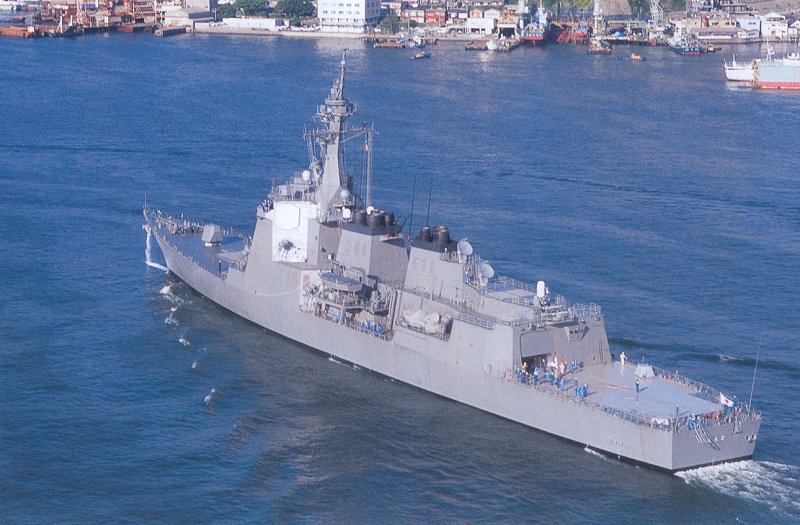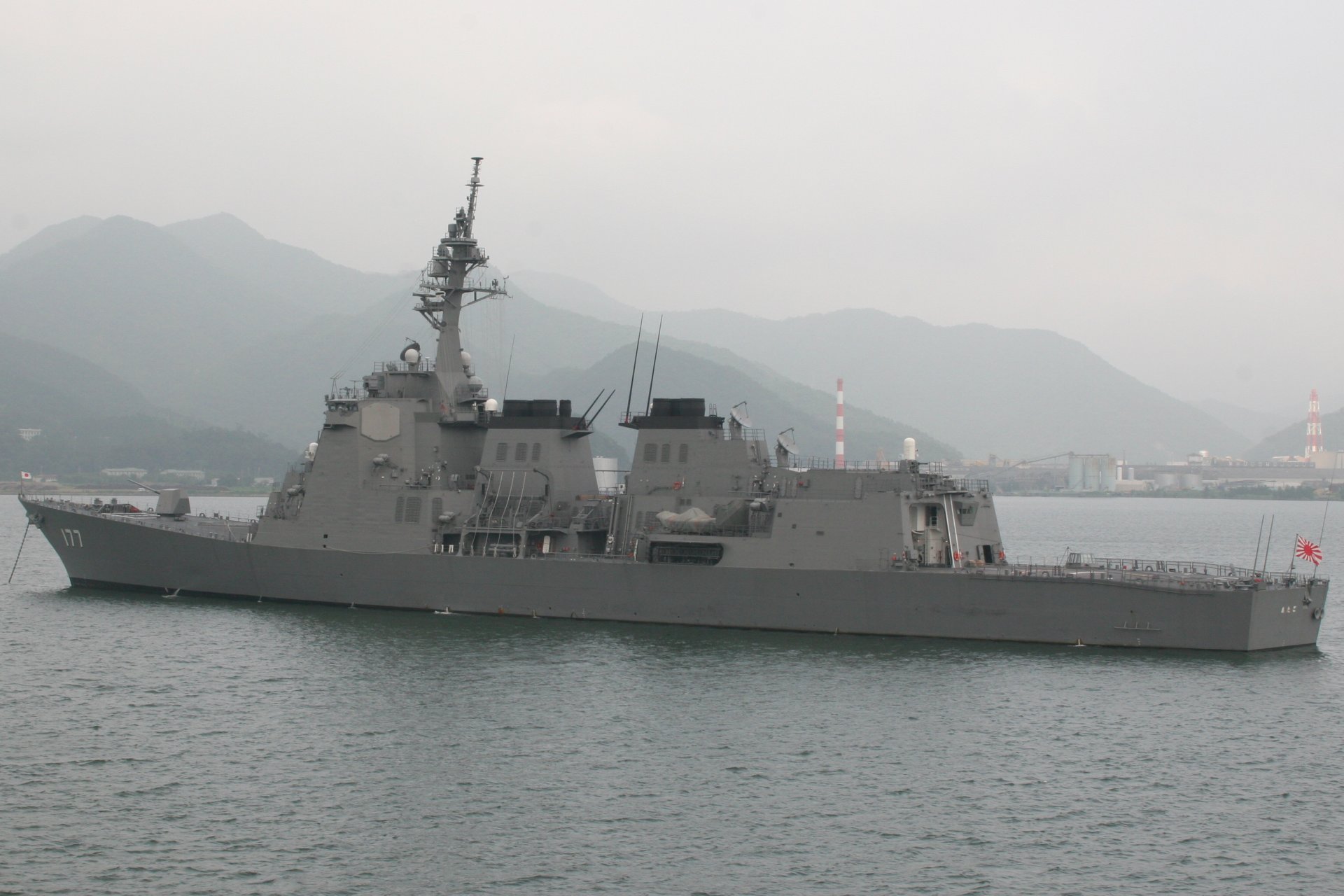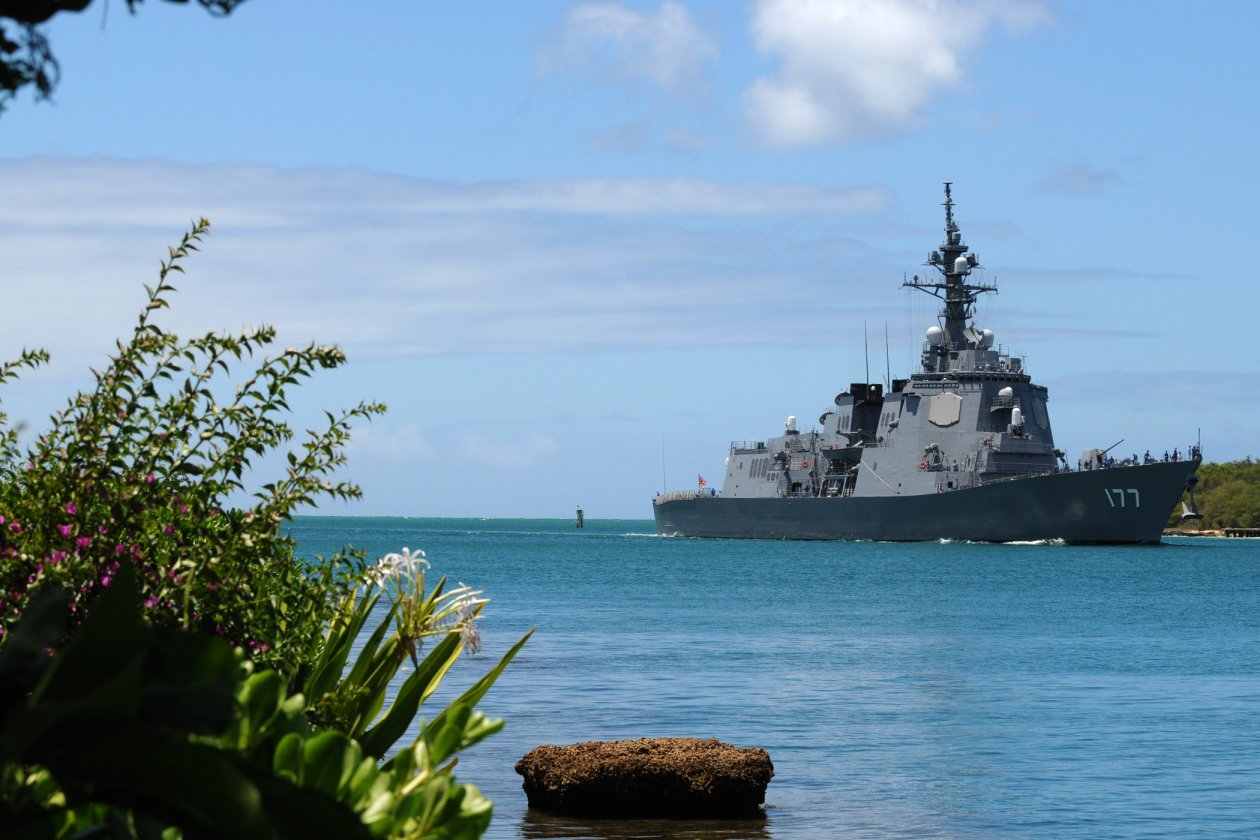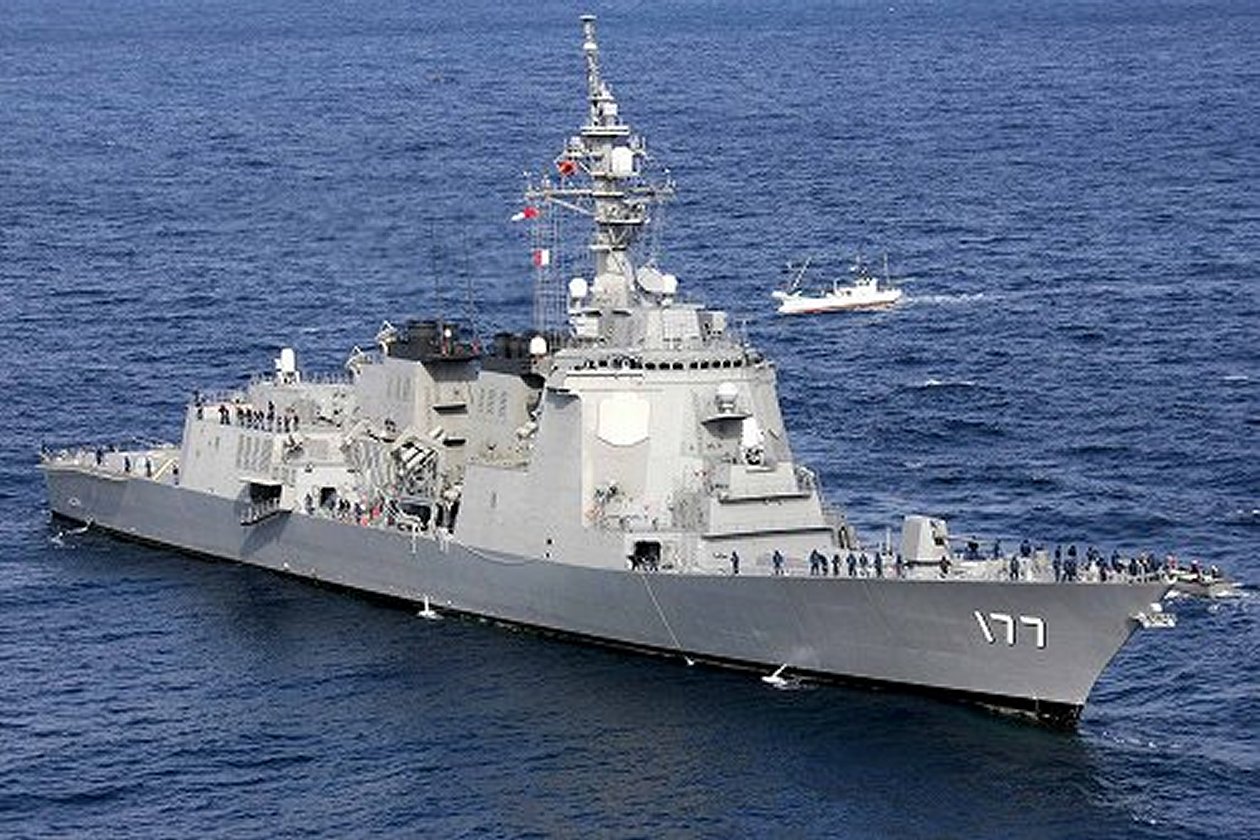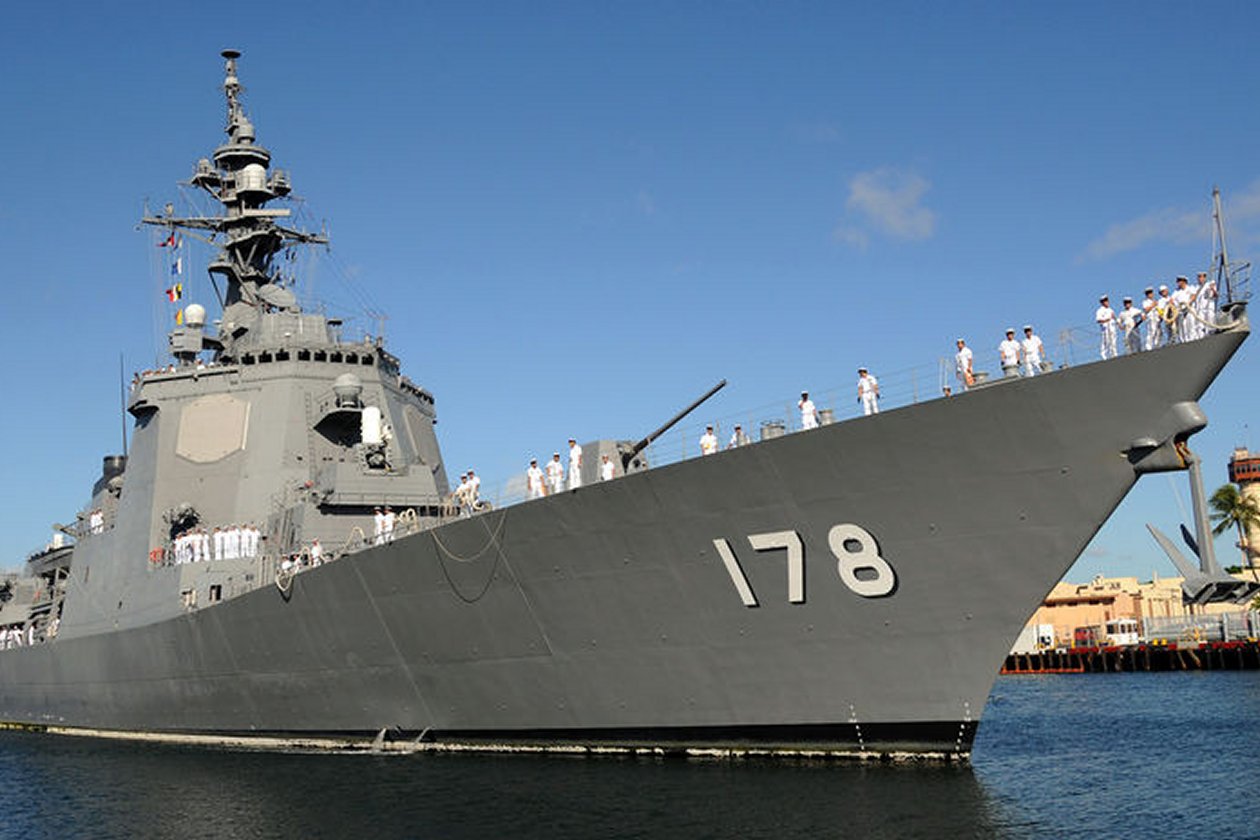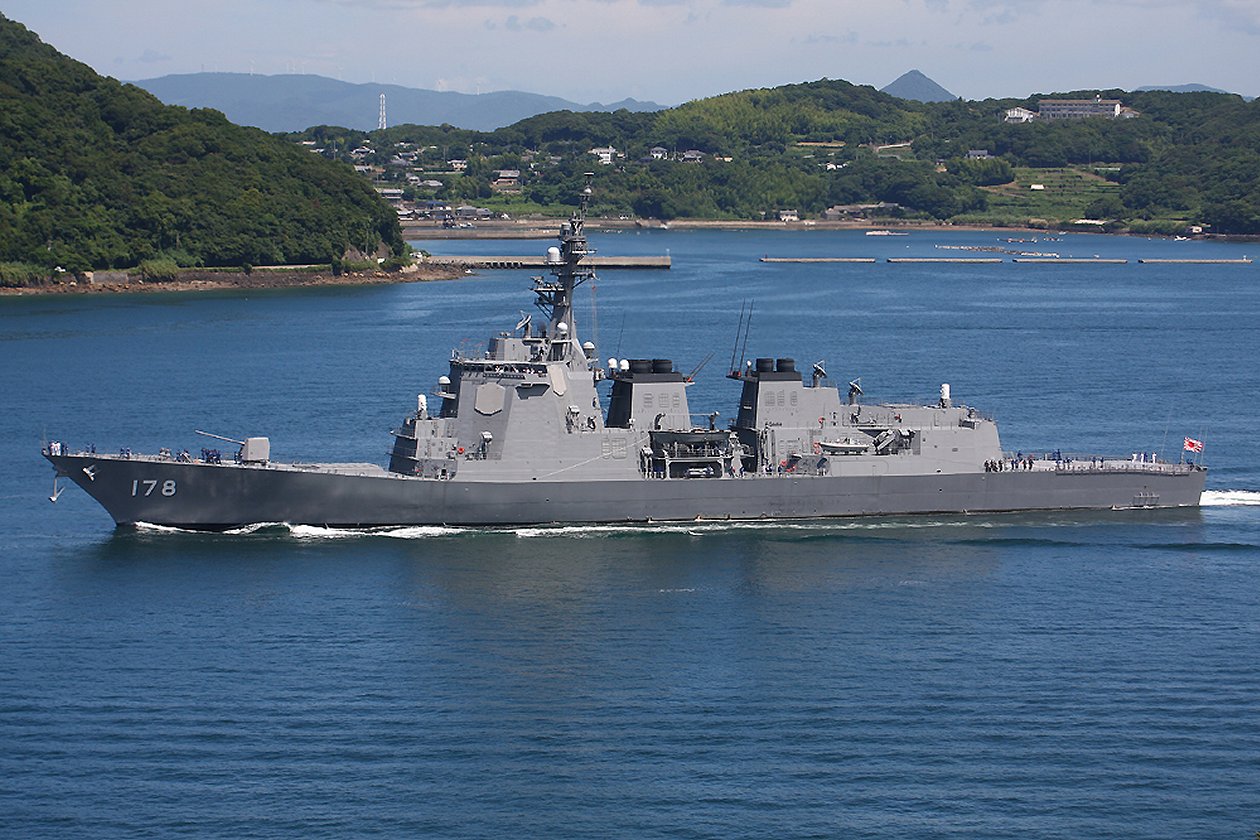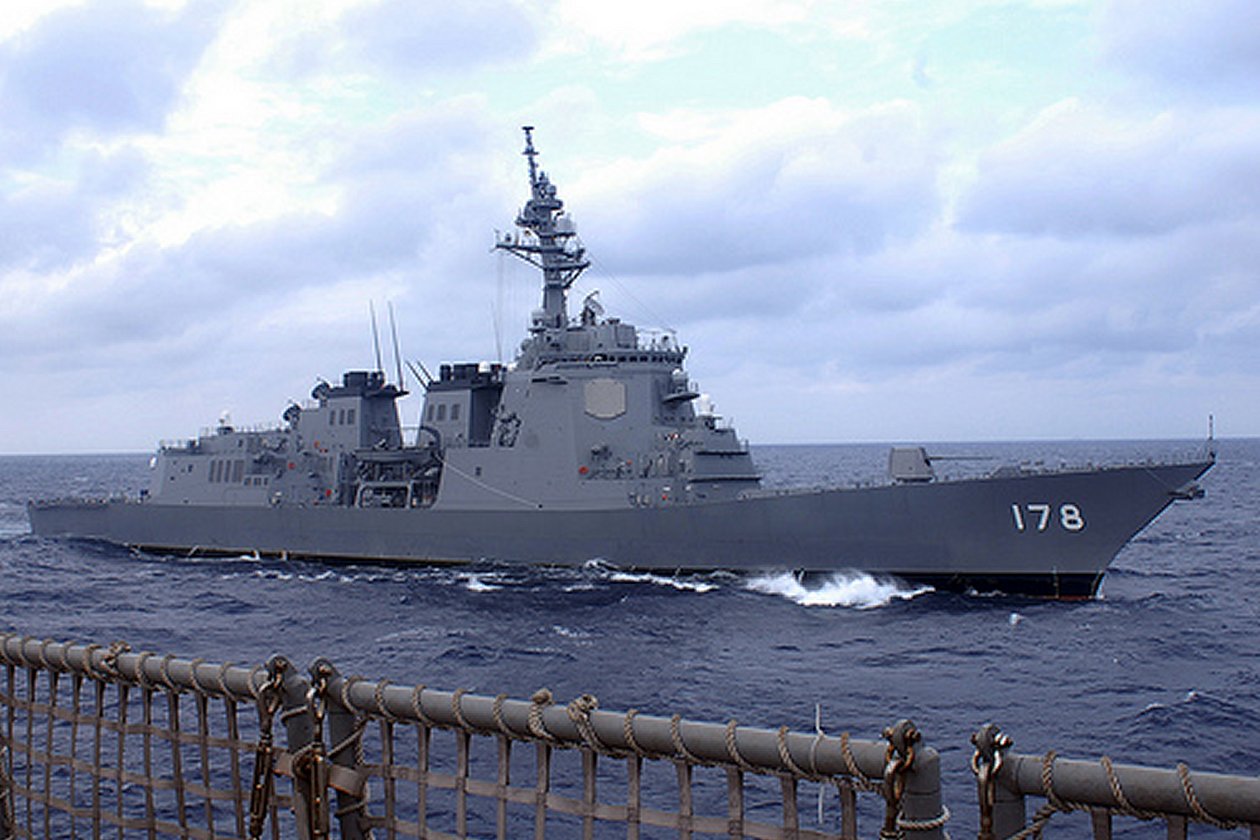
Designation: DDG
Length: 558 ft (170m)
Beam: 69 ft (21m)
Draft: 20 ft (6m)
Displace (Full Load): 10,000 tons
Propulsion: 4 GE LM2500, Gas Turbines; two shafts
Speed: 30+ knots
Range: 5,000 nautical miles (20 knots)
Crew: 340
Helicopter(s): 2 SH-60 Seahawk
Sensors:
- AN/SPY-1D Radar
- AN/SQQ-89 Sonar Suite
- AN/SQQ-28v LAMPS III
Armament:
- 64 cell Mk-41 VLS For SM-2, ASROC
- 32 cell Mk-41 VLS Aft SM-2, ASROC
- 8 SSM-1B ASM
- 2 X 20mm Phalanx CIWS
- 1 X 127mm MK-45 DP Gun
- 6 X Type 68 LW Torpedoes
Ships in class: 2
DDG-177 Atago
DDG-178 Ashigara
In the late 1990s with the completion of their four Kongo class AEGIS destroyers, the Japanese Maritime Self Defense Force (JMSDF) identified a need to develop and build an upgraded version of the Kongo Class to a similar specification as the US Navy Flight IIA Arleigh Burke class destroyers. Accordingly in their year 2000 budget, a plan to build two of these destroyers was set forth.
These vessels retain all of the armament of the Kongo class (whereas the Flight IIA Burkes removed the Harpoon missiles and CIWS systems) while still adding hangar space for two SH-60 helicopters. The LAMPS III package was added in keeping with the Flight IIA capability. The displacement of the Atago class is 10,000 tons full load.
In accordance with the Japanese constitution and the self defense nature of the Japanese military forces, the Atago class, like the Kongo class, carries no Land Attack Cruise Missiles (LACM).
DD178, Atego, was launched in August of 2005 and commissioned in March of 2007. DD-178, Ashigara, was launched in August of 2006 and was commissioned in 2008.
The Atago class, as well as the Kongo class will be upgraded to Theater Ballistic Missile (TBM) Defense capability to offset the rising danger of North Korean ballistic missiles.









